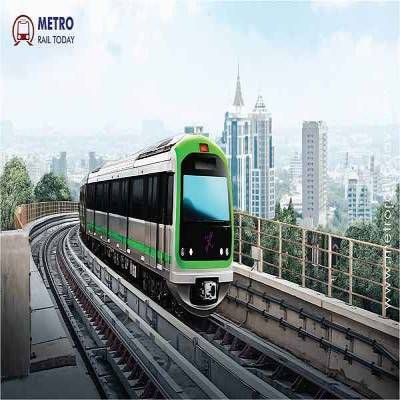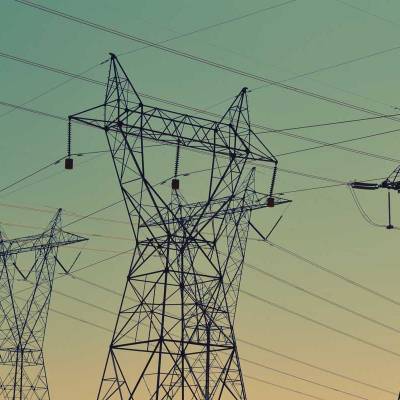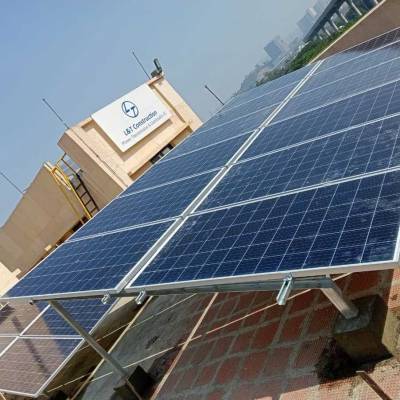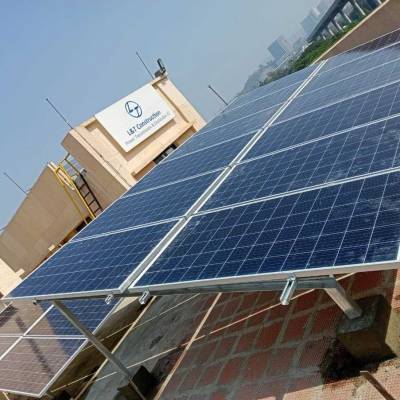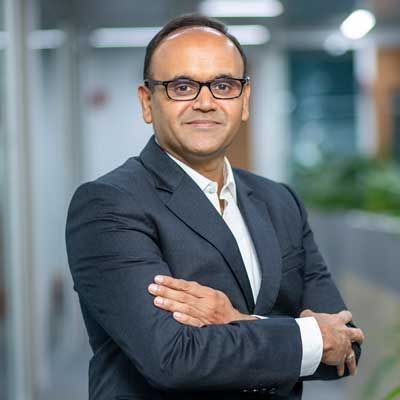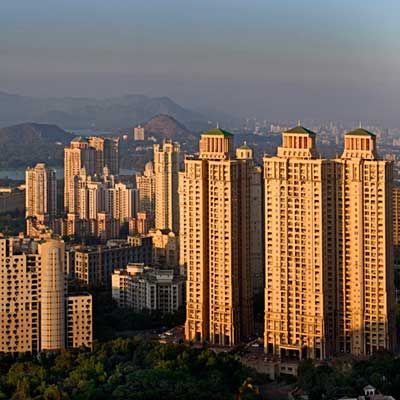- Home
- Real Estate
- Eco Archives

Eco Archives
This is India´s first business archive to bag IGBC´s Platinum rating under the Existing Building Operations and Maintenance Rating System. Indeed, the Tata Central Archives (TCA) in Pune has been religiously implementing measurable strategies and solutions in site and facility management, water-efficiency, energy-efficiency, health, and comfort and innovation.
Launched by JRD Tata on January 7, 1991, TCA serves as a central point of information and centre for research for Tata companies, researchers, and the public on the rich history of the House of Tata.
´The Tata Central Archives is the custodian of the Tata Heritage, and receiving a Platinum certification from IGBC is a proud milestone for us,´ says Farokh N Subedar, Chairman, Tata Services and COO, Tata Sons, as he shares more on the sustainable practices followed by TCA with CW.
Site and facility management:
We have undertaken the following measures required for site and facility management:
- Green Policy: This has been drafted for all future retrofits and renovations ensuring that environment-friendly materials and high energy-efficiency equipment shall be used.
- Building operations and maintenance: To ensure 100 per cent run time of all equipment, annual maintenance contracts are in place for all major equipment such as HVAC, VRF systems, DG sets, Precision HVAC system, solar PV system, etc.
- Heat island effect roof and non-roof: The entire roof has been tiled with high solar reflectivity index (high SRI) paint, which ensures that most of the heat incident on the roof surface gets reflected and is not absorbed by the structure. The surrounding of the campus has huge shading provided by existing tree cover, thereby addressing the non-roof heat island effect. Awareness and training were conducted about the above measures, which initially faced challenges in acceptance.
Highlights of the Green Policy: The policy lays down the focus on future retrofits and renovations.
It essentially includes the following highlights:
- Use of recyclable materials for all renovations.
- Low or zero volatile organic compounds (VOC) paints.
- Ultra low-flow fixtures.
- Use of LED light fixtures.
- Use of green energy and highly efficient equipment like VRF systems for HVAC.
- No use of CFC gases in refrigerants or fire-suppression systems.
- Low ozone depleting potential and low global warming potential refrigerants to be compulsorily used.
- Use of green housekeeping materials.
- Paper disposal and recycling and e-waste disposal policies.
Water-efficiency: The first retrofit measure has been to retrofit complete fixtures with ultra low-flow fixtures such as auto sensor taps and dual flush cisterns. We have also installed waterless urinal systems to improve water utilisation. A soil biotechnology system consists of an impervious containment, typically 1-1.5 m below ground. Organic wastewater is processed in an ecosystem consisting of soil-like media, bacterial culture, geophagus earthworms, natural mineral additives and select plants. Natural mineral additives are also used as a process regulator to achieve the desired treated water quality. Purification takes place by adsorption, filtration and biological reaction. The process operates in aerobic mode, thus eliminating the possibility of foul odour. The wastewater processing area is thus developed into a green belt, which easily integrates into any existing landscape. The above system has been used in a compact plant that processes wastewater, and treated water is used for landscaping and irrigation. The above initiated measures have helped us reduce water consumption by 40 per cent compared to the project baseline.
Energy-efficiency: Compared to the baseline energy consumption, the following retrofits have reduced energy consumption by more than 32 per cent:
- Ninety-five per cent replacement of old light fixtures with LED for internal and external lighting.
- Replacement of unitary air-conditioners with variable refrigerant flow (VRF) systems, which are highly energy-efficient.
- Installation of precision temperature and humidity-controlled air-conditioning for the repository area.
- Reduction of heat ingress owing to high SRI tiled roofs.
- Use of grid tied solar PV systems.
- Operations and maintenance protocol.
On-site grid PV
TCA has an on-site, grid-tied solar photovoltaic (PV) installation, which generates 54,000 kWh (electrical units) annually. The solar PV systems are from Renesola and ABB inverters. There is no battery as the system is grid-connected with reverse metering. Installations require adequate planning, beginning with the following sequence:
- Feasibility study.
- Shadow analysis.
- Connected load study.
- On-grid systems or off grid.
- In our case, we chose on grids as we did not want batteries.
- Structural and roof stability study from the point of loading panels.
- Base preparation for panel mounts.
- Balance of system components such as inverters, general arrangement of system wiring, conduits electrical panels, etc.
- Final installation and commissioning.
At TCA, the solar PV system meets about 20 per cent of power demand annually. Ensuring health and comfort:
At TCA, we have ensured that people´s health and comfort is taken care of. For this, adequate daylight is available in office areas. Also, natural ventilation options with operable windows have been provided to ensure adequate fresh air to all, and a natural and green campus provides enhanced oxygen levels to occupants and visitors. Measurement and verification: We have various systems and processes to ensure continuous measurement and verification in place, including those to measure the end sources of consumption to improve system performance. We have separate meters to measure HVAC, lighting and pumping.
DG and solar outputs are compared with baselines to check for deviations. Adequate action has been taken to check any deviations so that energy consumption remains within the efficiency band. Similarly, water metering for bore-well water and end-use water consumption are also measured.
TCA innovations: We have made a provision for a handicapped toilet on the premises. Additionally, we have signed up with Swacch, a Pune Municipal Corporation initiative for safe processing of e-waste. The approximate cost incurred as on date is Rs 50 lakh. This includes installation of solar PV systems, installation of VRF-based AC systems and all other green building measures. On an average, a retrofit project such as this has a payback of five years.
TCA has an added responsibility to create and maintain a repository of Tata records that will motivate and inspire generations to come. Adding to this is the record it has set in the green league as well!
- SHRIYAL SETHUMADHAVAN
To share details of any green initiatives, write in at feedback@ConstructionWorld.in
The Tata Central Archives in Pune implements measurable and sustainable strategies, solutions and innovations. This is India´s first business archive to bag IGBC´s Platinum rating under the Existing Building Operations and Maintenance Rating System. Indeed, the Tata Central Archives (TCA) in Pune has been religiously implementing measurable strategies and solutions in site and facility management, water-efficiency, energy-efficiency, health, and comfort and innovation. Launched by JRD Tata on January 7, 1991, TCA serves as a central point of information and centre for research for Tata companies, researchers, and the public on the rich history of the House of Tata. ´The Tata Central Archives is the custodian of the Tata Heritage, and receiving a Platinum certification from IGBC is a proud milestone for us,´ says Farokh N Subedar, Chairman, Tata Services and COO, Tata Sons, as he shares more on the sustainable practices followed by TCA with CW. Site and facility management: We have undertaken the following measures required for site and facility management: Green Policy: This has been drafted for all future retrofits and renovations ensuring that environment-friendly materials and high energy-efficiency equipment shall be used. Building operations and maintenance: To ensure 100 per cent run time of all equipment, annual maintenance contracts are in place for all major equipment such as HVAC, VRF systems, DG sets, Precision HVAC system, solar PV system, etc. Heat island effect roof and non-roof: The entire roof has been tiled with high solar reflectivity index (high SRI) paint, which ensures that most of the heat incident on the roof surface gets reflected and is not absorbed by the structure. The surrounding of the campus has huge shading provided by existing tree cover, thereby addressing the non-roof heat island effect. Awareness and training were conducted about the above measures, which initially faced challenges in acceptance. Highlights of the Green Policy: The policy lays down the focus on future retrofits and renovations. It essentially includes the following highlights: Use of recyclable materials for all renovations. Low or zero volatile organic compounds (VOC) paints. Ultra low-flow fixtures. Use of LED light fixtures. Use of green energy and highly efficient equipment like VRF systems for HVAC. No use of CFC gases in refrigerants or fire-suppression systems. Low ozone depleting potential and low global warming potential refrigerants to be compulsorily used. Use of green housekeeping materials. Paper disposal and recycling and e-waste disposal policies. Water-efficiency: The first retrofit measure has been to retrofit complete fixtures with ultra low-flow fixtures such as auto sensor taps and dual flush cisterns. We have also installed waterless urinal systems to improve water utilisation. A soil biotechnology system consists of an impervious containment, typically 1-1.5 m below ground. Organic wastewater is processed in an ecosystem consisting of soil-like media, bacterial culture, geophagus earthworms, natural mineral additives and select plants. Natural mineral additives are also used as a process regulator to achieve the desired treated water quality. Purification takes place by adsorption, filtration and biological reaction. The process operates in aerobic mode, thus eliminating the possibility of foul odour. The wastewater processing area is thus developed into a green belt, which easily integrates into any existing landscape. The above system has been used in a compact plant that processes wastewater, and treated water is used for landscaping and irrigation. The above initiated measures have helped us reduce water consumption by 40 per cent compared to the project baseline. Energy-efficiency: Compared to the baseline energy consumption, the following retrofits have reduced energy consumption by more than 32 per cent: Ninety-five per cent replacement of old light fixtures with LED for internal and external lighting. Replacement of unitary air-conditioners with variable refrigerant flow (VRF) systems, which are highly energy-efficient. Installation of precision temperature and humidity-controlled air-conditioning for the repository area. Reduction of heat ingress owing to high SRI tiled roofs. Use of grid tied solar PV systems. Operations and maintenance protocol. On-site grid PV TCA has an on-site, grid-tied solar photovoltaic (PV) installation, which generates 54,000 kWh (electrical units) annually. The solar PV systems are from Renesola and ABB inverters. There is no battery as the system is grid-connected with reverse metering. Installations require adequate planning, beginning with the following sequence: Feasibility study. Shadow analysis. Connected load study. On-grid systems or off grid. In our case, we chose on grids as we did not want batteries. Structural and roof stability study from the point of loading panels. Base preparation for panel mounts. Balance of system components such as inverters, general arrangement of system wiring, conduits electrical panels, etc. Final installation and commissioning. At TCA, the solar PV system meets about 20 per cent of power demand annually. Ensuring health and comfort: At TCA, we have ensured that people´s health and comfort is taken care of. For this, adequate daylight is available in office areas. Also, natural ventilation options with operable windows have been provided to ensure adequate fresh air to all, and a natural and green campus provides enhanced oxygen levels to occupants and visitors. Measurement and verification: We have various systems and processes to ensure continuous measurement and verification in place, including those to measure the end sources of consumption to improve system performance. We have separate meters to measure HVAC, lighting and pumping. DG and solar outputs are compared with baselines to check for deviations. Adequate action has been taken to check any deviations so that energy consumption remains within the efficiency band. Similarly, water metering for bore-well water and end-use water consumption are also measured. TCA innovations: We have made a provision for a handicapped toilet on the premises. Additionally, we have signed up with Swacch, a Pune Municipal Corporation initiative for safe processing of e-waste. The approximate cost incurred as on date is Rs 50 lakh. This includes installation of solar PV systems, installation of VRF-based AC systems and all other green building measures. On an average, a retrofit project such as this has a payback of five years. TCA has an added responsibility to create and maintain a repository of Tata records that will motivate and inspire generations to come. Adding to this is the record it has set in the green league as well! - SHRIYAL SETHUMADHAVAN To share details of any green initiatives, write in at feedback@ConstructionWorld.in


